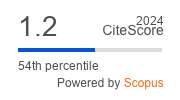European Union Enlargement and the new Peripheral Regions: Political, Economic and Social Aspects and Related Issues – A Case of Warmia and Mazury Region
DOI:
https://doi.org/10.4335/8.4.353-367(2010)Abstract
This paper analyses the problems of the new peripheral regions after the European Union enlargement. The last EU enlargements in 2004 and 2007 were the logical consequences of political, social and economic changes associated with the break-up of the Soviet Union and the disintegration of the Communist Bloc. These two enlargements led to substantial geopolitical consequences. The European Union’s demographic and territorial potential increased by around one-third. At the same time, the European Union structures moved east and southwards. In 2004, one of the Polish regions, the Warmia and Mazury region, faced some new challenges associated with the Polish accession to the EU. The years of Poland’s membership in the European Union have been a period of gaining experience in submitting EU projects for the region, and in allocating financial resources properly. The total effect of this period is rather positive. However, we must not forget that many negative economic and social phenomena still occur (e.g., a high unemployment rate, emigration of young educated people, etc.). Politically, a new challenge for the Warmia and Mazury region is going to be a continuation and development of the cross-border cooperation with the Kaliningrad region. Poland’s accession to the EU has had no positive impact on improving the Polish-Russian relations at the central decision-making level. KEYWORDS: • European Union • regional development • new peripheral regions • Warmia and Mazury regionDownloads
Published
2010-10-06
Issue
Section
Article
How to Cite
European Union Enlargement and the new Peripheral Regions: Political, Economic and Social Aspects and Related Issues – A Case of Warmia and Mazury Region. (2010). Lex Localis - Journal of Local Self-Government, 8(4), 353-367. https://doi.org/10.4335/8.4.353-367(2010)








